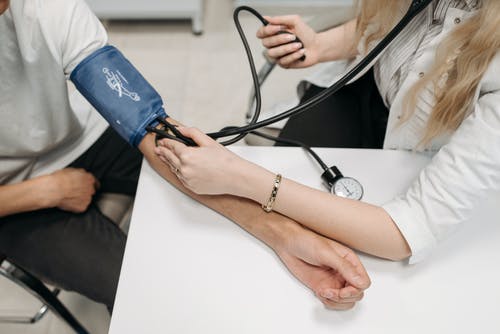Imagine that after years of struggling to eat enough food, you’re able to finally give your body the nutrition it desperately needs. It should be a moment of relief, right? A step toward healing? But then, seemingly out of nowhere, things start to feel… off. Maybe your legs start swelling. Maybe you feel dizzy or weak. Perhaps your heart feels like it’s racing, your digestion goes completely haywire or you feel nauseous and maybe even vomit. What’s going on? Why do you feel worse now you’re eating more!? Didn’t everyone promise this would make you feel better?…
This is a part (another part) of recovery that no one really warns you about. Refeeding doesn’t instantly feel good. Renourishment doesn’t instantly make all your problems go away. The reality is that recovering from an eating disorder is quite the opposite. It often gets worse before it gets better.
If you’re experiencing any of these above symptoms it could be all part of your body readjusting, healing and recalibrating to a more regular and adequate food intake, or you could be experiencing refeeding syndrome.
Refeeding syndrome is a serious and sometimes life-threatening condition that happens when food is reintroduced too quickly after a period of starvation or malnutrition. It’s something that can be a huge risk for people recovering from eating disorders.
So, let’s dive into it: what exactly is refeeding syndrome, why does it happen, and perhaps most importantly what can you do to protect yourself or your loved one during recovery?
What is Refeeding Syndrome

If we look at refeeding syndrome from a technical perspective, it is caused by shifts in electrolytes and fluids that happen when food is reintroduced after a period of prolonged malnutrition or starvation. This is because when your body has been in a state of starvation, it has adapted to survive on this inadequate food intake and part of what our bodies do to adapt to not enough food includes slowing down our metabolism, conserving energy, and even breaking down muscle and fat for fuel to keep our vital organs running.
Then, when more food is suddenly reintroduced, especially carbohydrates, your body shifts into overdrive. Insulin levels spike, triggering cells to start pulling nutrients (like phosphate, potassium, and magnesium) from the bloodstream. The problem? If these nutrients are already low (which they usually are after prolonged malnutrition), this sudden demand can cause dangerous imbalances. The heart, muscles, and nervous system are particularly vulnerable to these rapid shifts because they rely on these electrolytes to function properly.
The scary part? Refeeding syndrome can develop within just a few days of eating more food, sometimes even sooner. And because it’s not always well understood (even in medical settings), it can go undiagnosed until serious complications arise.
Who is at Risk for Refeeding Syndrome?

While refeeding syndrome can technically happen to anyone who has been malnourished for a prolonged period, there are some groups who are at particularly high risk, including:
- People recovering from an eating disorders (especially anorexia nervosa)
- Anyone who has experienced significant weight loss in a short period
- Those who have been fasting for long periods (including for religious, medical, or personal reasons)
- People with chronic illnesses that impact nutrition (such as cancer or gastrointestinal disorders)
- Individuals with alcohol use disorder, as this can deplete key nutrients like thiamine
If you or someone you love falls into one of these categories, being aware of the signs and symptoms of refeeding syndrome is critical for a safe recovery.
Symptoms of Refeeding Syndrome

Refeeding syndrome can manifest in a variety of ways, and symptoms can range from mild to severe. Some of the most common signs include:
Electrolyte Imbalances & Their Effects
- Low phosphate levels (hypophosphatemia): This is the hallmark of refeeding syndrome and can lead to extreme weakness, difficulty breathing, confusion, and even heart failure.
- Low potassium levels (hypokalemia): Can cause muscle cramps, heart arrhythmias, and severe fatigue.
- Low magnesium levels (hypomagnesemia): May lead to tremors, seizures, and abnormal heart rhythms.
Fluid Retention & Edema
- Swollen ankles, feet, or hands
- Sudden bloating or puffiness
- Shortness of breath due to fluid overload
Heart & Cardiovascular Issues
- Irregular or racing heartbeat
- Low blood pressure
- Chest pain or palpitations
Neurological & Mental Health Symptoms
- Confusion or difficulty concentrating
- Seizures (in severe cases)
- Feeling more anxious or depressed than usual
Gastrointestinal Issues
- Nausea or vomiting
- Abdominal pain
- Diarrhea or constipation
While some of these symptoms might seem minor at first, they can escalate quickly. If you or someone you know starts experiencing these warning signs while increasing your or their food intake, seek medical help immediately.
Preventing Refeeding Syndrome: How to Reintroduce Food Safely

The good news? Refeeding syndrome is preventable. It’s also a risk that passes as your body readjusts to adequate nutrition and not something with no end in sight. If done correctly, nutritional rehabilitation can be safe and effective and in reality, nutritional replenishment is the only safe option for long-term health, recovery and life on the other side of an eating disorder. The key is going slow and steady and monitoring your body’s response carefully as you increase your food intake.
Here are some evidence-based strategies to reduce the risk of developing refeeding syndrome:
- Start with a Gradual Increase in Calories
It might be tempting to jump straight into a “normal” diet after a period of restriction, but this can be dangerous. A safer approach involves starting with a lower calorie intake and gradually increasing over time. I would recommend doing this under the guidance of a dietitian and supervision of a doctor because you also do want to increase your food intake and not stay in the danger zone indefinitely. The protocol in hospital is a gradual reintroduction of food over the course of about a week and until the thread of refeeding syndrome has passed.
- Prioritize Electrolytes
Before significantly increasing calories, electrolyte levels should be checked and corrected if needed. This includes phosphate, potassium, and magnesium. Some individuals may require supplements, particularly those at high risk.
- Ensure Adequate Thiamine (Vitamin B1) Intake
Thiamine plays a huge role in carbohydrate metabolism, and deficiencies can contribute to refeeding complications. We generally recommend supplementing with 100-300 mg of thiamine per day before and during refeeding.
- Monitor Fluid Balance
Drinking too much water too quickly can exacerbate fluid shifts, leading to swelling and potential heart complications. Balance is key and hydration is important, but excessive fluid intake should be avoided.
- Regular Medical Monitoring
Because refeeding is complex and preventing refeeding syndrome is so dangerous if possible, refeeding should be done under medical supervision. This might include:
- Frequent blood tests to check electrolyte levels
- EKGs to monitor heart function
- Ongoing symptom assessment to catch any red flags early
What to Expect Emotionally During Refeeding

Refeeding isn’t just physically demanding, just like all aspects of recovering from an eating disorder it’s also incredibly emotionally exhausting too. Many people recovering from eating disorders experience extreme hunger, intense food cravings, and fear around eating more (even if they know they have to and want to eat more and recover). On top of that, digestive discomfort, bloating, and body changes can be confronting (to put it lightly).
If you’re struggling, here are a few things to keep in mind:
- Your body is adjusting. What feels uncomfortable now will not last forever. The idea of recovery is that it is “pain” with a purpose. It’s not intended to be uncomfortable for the rest of your life.
- Bloating and fluid retention are temporary. Your body is healing, and part of that process involves redistributing fluids.
- Extreme hunger is normal. After a period of starvation, your body needs to catch up. Trust that this will level out in time.
- Mental health support is crucial. Working with a dietitian and a therapist who has can help you make changes in the way that you feel and behave is crucial to staying the path when things get hard (which they will).
Final Thoughts: Healing Safely

Refeeding syndrome is a serious but manageable risk in eating disorder recovery. By educating yourself, working with a dietitian and medical professionals, and approaching refeeding in a structured way, you can reduce the risk of complications and set yourself up for a strong, sustainable recovery.
If you or someone you love is in recovery, don’t go through this alone. Reach out to professionals who understand the complexities of refeeding, and surround yourself with support. You deserve full recovery, and with the right approach, you can get there, safely.
With my whole heart I hope you found this information valuable.

Become Great. Live Great.
Bonnie.



